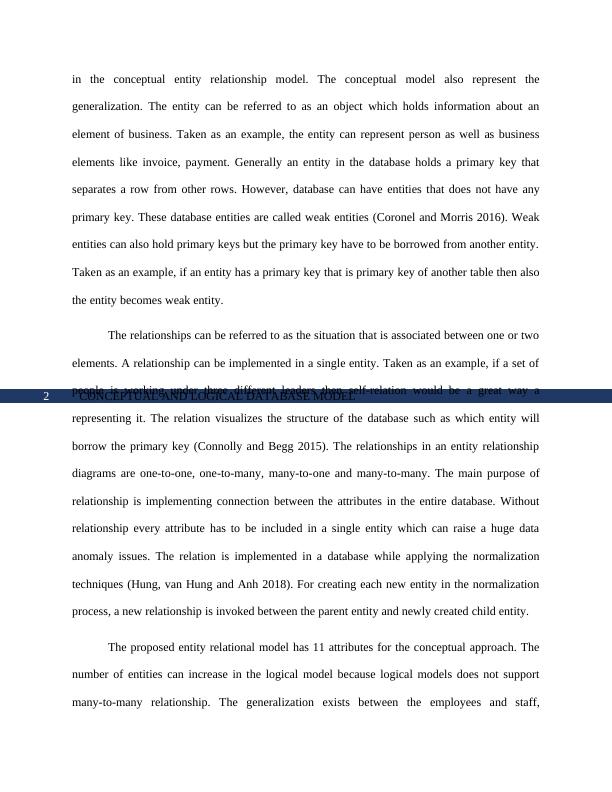Conceptual and Logical Database Model
The assignment involves storing information about a teaching process in the Sun Valley college database.
12 Pages1314 Words479 Views
Added on 2022-11-17
About This Document
This article explains the conceptual and logical database model with examples. It covers the ERD, entities, relationships, and normalization techniques. It also includes tables for employees, staff, administrator, professor, student, class, faculty, department, and courses.
Conceptual and Logical Database Model
The assignment involves storing information about a teaching process in the Sun Valley college database.
Added on 2022-11-17
ShareRelated Documents
End of preview
Want to access all the pages? Upload your documents or become a member.
Entity Relationship Diagram in Library Management System
|25
|2195
|76
Database Modelling and Normalization for Desklib
|10
|1157
|79
Systems Analysis and Database Design
|6
|1361
|25
Database Model Design
|10
|2343
|341
Course Title and Code:.
|5
|645
|1
Home Inventory Database | Assignment
|9
|1147
|411




